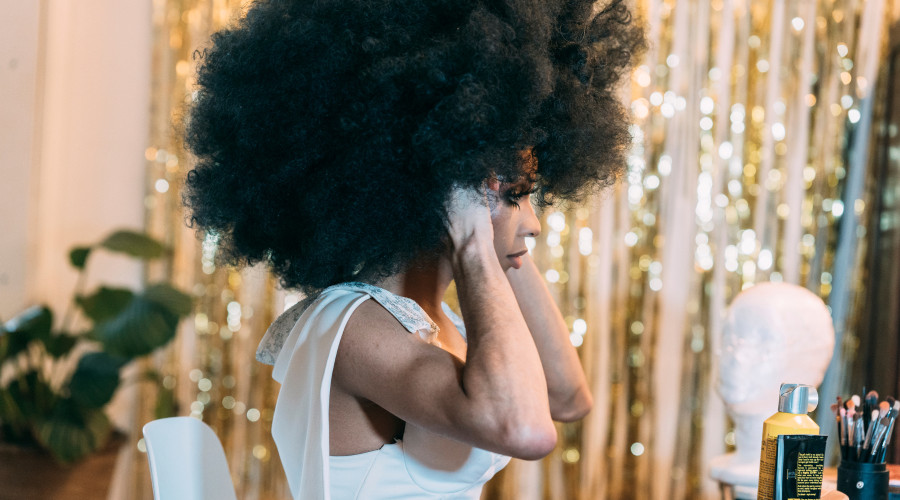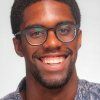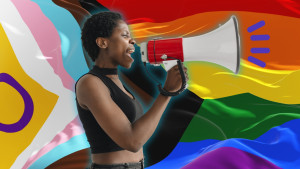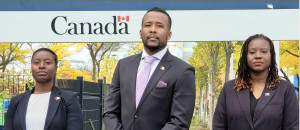Drag story hours are kid-friendly performances by drag artists to educate and entertain. Some parents pulled their kids from classes on the first day of Pride month to protest the celebrations. Some schools dialled back their Pride festivities all together this year out of caution, and presumably to avoid complaints or “pushback” from some parents.
Members of the 2SLGBTQI+ community and allies describe opportunities like drag story hours and other forms of representation as a necessary part of human rights education. Critics of the TDSB’s move say it represents a “dangerous” setback of 2SLGBTQI+ rights because it implies their rights are debatable.
The TDSB’s decision departs from its previous stance on 2SLGBTQI+ education. The 2011 Curriculum Resource Guide states that human rights education is essential for preventing discrimination and human rights abuses. No student can be exempted from human rights education, even on religious grounds, because it violates Ontario’s human rights policies. But as of now, the TDSB has not backed down on allowing students to opt-out of the drag story time hours, saying that it's in line with the opt-out feature in the sex ed curriculum. But advocates are pointing out that there is nothing sexual about drag story time, and that it sends the message that a drag queen reading a book is something inherently dangerous or harmful.
There's a misunderstanding and a lack of knowledge of transgender identity or drag performance. "So what we're seeing is people are exploiting the increased popularity and the ignorance towards that. And it's through that exploitation that we're now seeing storytimes be targeted, especially when they are being utilized as a mechanism to have fun and to engage young people," says Debbie Owusu-Akyeeah.
Owusu-Akyeeah is the executive director of The Canadian Centre for Gender and Sexual Diversity. They deliver educational programming to schools on issues related to gender and sexual diversity, intersecting identities, power, privilege and history.
“The problem we're seeing has reached the boiling point,” they say. “What we’re hearing is that people are feeling terrified because of what they define as a newly emboldened pushback on 2SLGBTQI+ rights specifically targeting trans and gender diversity."
Owusu-Akyeeah says queer and trans young people are particularly impacted by the growing negative 2SLGBTQI+ sentiment and some are afraid to be out in their schools.
According to the Canadian Mental Health Association, 2SLGBTQI+ people experience higher rates of depression, anxiety, obsessive-compulsive and phobic disorders, suicidality, self-harm, and substance use. One Ontario-based study found that 77 percent of trans respondents had seriously considered suicide, and 45 percent made an attempt.
The History of Drag
Cameron Crookston is the author of The Cultural Impact of RuPaul's Drag Race: Why Are We All Gagging? and lecturer at the University of British Columbia who studies drag culture. He says elements of drag performance have existed in different cultures throughout history including Greek, Shakespearean plays, and North American Indigenous groups. However, laws against “cross-dressing” started to ramp up in the late 19th century and 20th century in Canada.
There were loopholes like if you were in a play or at a costume party because dressing up has existed in some form for centuries. Crookston believes gender diverse and non-conforming people, and trans people gravitated towards drag because they could take part in it without the stigma. It was also a way to get around transphobic laws Crookston says.
“Drag emerges because there are no legal cultural practices for queer people. Drag becomes a way for people to build a cultural practice that represents sexual and gender diversity using kind of repurposed bits of mainstream pop culture. I think at its inception, drag is about having some kind of cultural practice that speaks to the queer experience,” Crookston explains.
Crookston grew up in Toronto but said he felt like an outsider and disconnected to his world. When he came out he was eager to find authenticity, relationships, and a culture he resonated with, he saw an opportunity to do that through drag.
“This is my chance to find a group I connect with. I was hungry for a clear cultural practice and drag was one of the biggest, loudest things,” he explains.
In addition to finding community, Crookston says drag can help people learn about themselves because it gives them permission to invent their image and personality.
“Don’t be bound by how you have been, or defaulted into any social role or gender role. If you have an image of who you wish you were in your mind, create that, become a self-portrait of yourself,” Crookston says.
He says drag is a good symbol for self-expression for straight people as well as the 2SLGBTQI+ community. Crookston referenced the iconic film The Rocky Horror Picture Show and the commercial success of Ru Paul’s Drag Race as catalysts for mainstreaming queer culture and popularizing the idea that everybody is able to be whoever they want to be.
Crookston says another benefit of introducing straight people to drag is that it helps foster empathy.
“I think there's something really valuable in learning something totally outside of your experience. It’s great because learning about the kinds of things that another culture consumes and why gives you a different perspective on that experience,” Crookston says.
Crookston mentioned that people often conflate drag performers with being transgender, and says while they often intersect, they're separate phenomena. Broadly speaking, he explains that drag is a job or an artistic practice or performance, while transgender is someone who doesn’t identify with the gender they were assigned at birth.
“Being transgender is something someone is innately, regardless of who's watching,” he says.
"For a relatively large subset of our population, there's a lot of confusion and people still believe that transgender people are cross-dressing. So it becomes easy for drag queens to be a symbol of transgender and gender nonconformity, etc. When I talk about the pushback against trans rights, I often want to tell people that two things are happening at the same time. We have a rise in the popular representation of transgender people, or in this case, a rise in the popular representation of drag queens."
The Politics of Drag
Drag story hours have existed since 2015 but there’s been a spike in protests and online vitriol against them in recent months. The leader of Quebec’s Conservative Party, Eric Duhaime, launched a petition demanding public funds not go towards promoting drag queen story hours and that parents must first give specific consent.
In response to rising queer hate, Ontario New Democratic Party MPP, Kristyn Wong-Tam, introduced a private member’s bill earlier this year to keep the queer community safe.
The Protecting 2SLGBTQI+ Communities Act would allow the creation of temporary safety zones in the province where anti-2SLGBTQI+ harassment, intimidation and hate speech happening within 100 metres of the designated address could result in a $25,000 fine. Calgary has a similar bylaw, after venues across the country have seen people protest drag events.
Part of the NDP’s bill would also create an advisory committee partially composed of a diverse group of 2SLGBTQI+ community members to tackle hate crimes against their community. Statistics Canada found that there was a 64 per cent increase in police-reported hate crimes targeting individuals over their sexual orientation from 2020 to 2021. Many of these were violent crimes.
Hateful rhetoric isn’t uncommon for Toronto-based kindergarten teacher and drag performer, John Paul Kane. Under the stage name Fay Slift, Kane and his friend Kaleb Roberston (Fluffy Soufflé), have performed together for seven years.
Robertson and Kane are the stars of The Fabulous Show with Fay and Fluffy on Family Jr. The program is a cabaret-style series for preschoolers that teaches the importance of inclusivity, empowerment and kindness using tools like songs and puppets. Kane says the underlying premise of the show is that families are about love and its goal is to “create an inclusive environment for queer families and allies where they feel seen, safe, welcomed and celebrated.”
Kane says creating a chosen family and seeking community is an everyday experience in queer life. “Many of us were abandoned by our own families because we were queer so we had to seek out others to build our communities of love and support,” he explains.
“Children deserve to have things to look forward to and aspirations. They also need to understand they have a right to demand they be treated with kindness, compassion and understanding, regardless of their life,” Kane argues.
Despite this, Kane says the pair regularly receive threats and hateful comments from people who believe they’re trying to “make their kids queer or trans.” He suspects that this mistaken belief stems from conspiracy theories or extremist religious beliefs. Kane points out that the urge to control people’s bodies and strict moral codes, especially about sex and gender, are typical of right-wing movements.
“It’s deeply rooted in white supremacy and separation. It’s tropes that are hateful and hurtful attacking communities that are already marginalized,” he explains.
Owusu-Akyeeah argues that the pushback against cisgender gays and lesbians seen decades ago has been repackaged and is now “targeting specifically those who are trans and gender diverse.” She says language like “pedophilia,” “groomers,” and “child protection” is being used as a political wedge. She and others have highlighted that the conspiracy theories that underpin this thinking have been popularized and emboldened by communities like the ones that developed via the Freedom Convoy.
The Freedom Convoy “let people know how to find common cause amongst themselves and that they can be politically active and a little bit more vocal,” Owusu-Akyeeah says.
Owusu-Akyeeah says it’s important to remember that marginalized people’s rights are precarious, and when it comes to fighting for social change, the movements are connected. She sees the pushback against the 2SLGBQI+ community as the canary in the coal mine.
“Those small fights are part of a bigger fight for rights. And if you love democracy and human rights, fighting for LGBTQ rights at this moment, couldn't be more consequential. We're talking about freedom of expression, freedom of assembly, and fundamental human rights being attacked that won't stop with LGBTQ."

 By
By 





